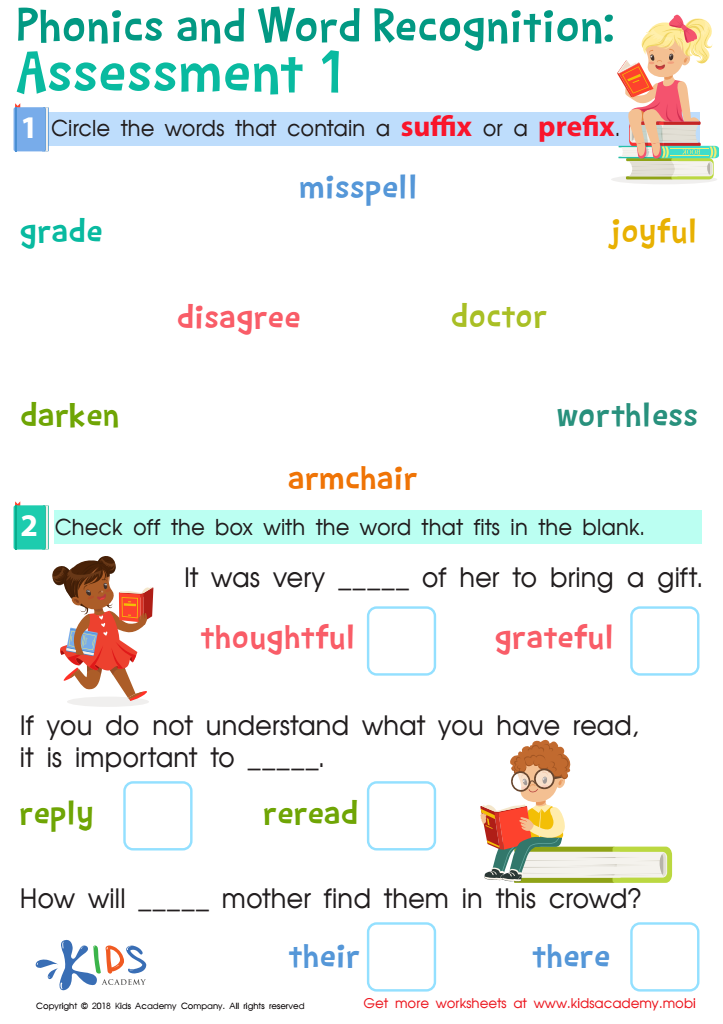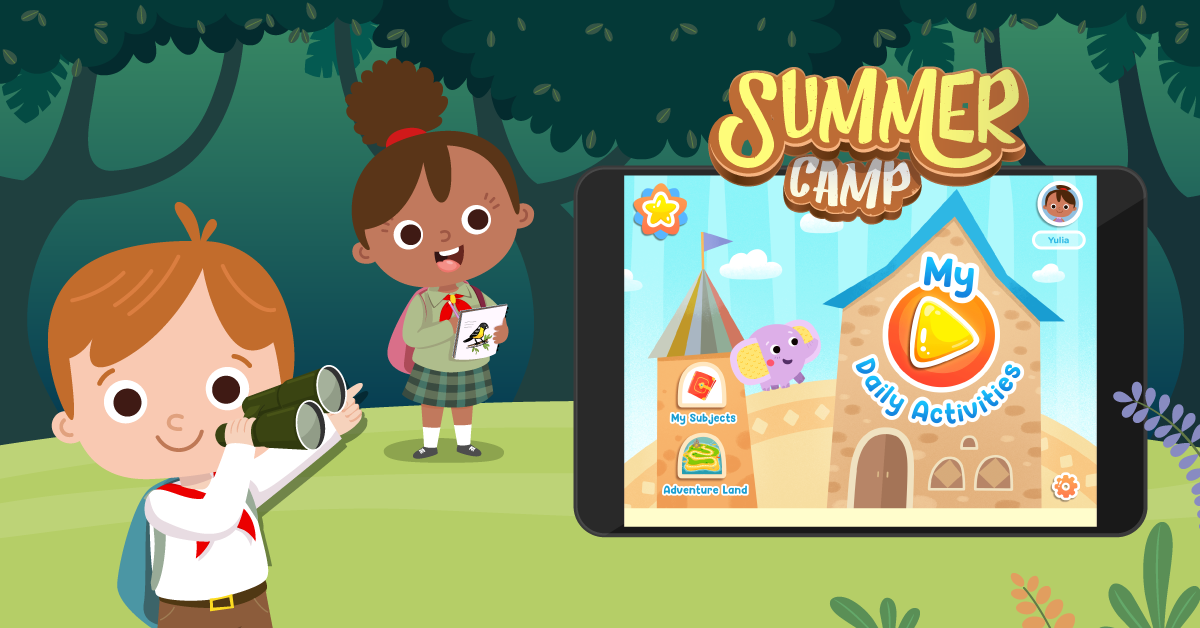Normal Elementary Phonics worksheets activities for 9-Year-Olds
1 filtered results
-
From - To


Phonics and Word Recognition: Assessment 1 Worksheet
Normal Elementary Phonics worksheets activities are a cornerstone of effective literacy instruction, providing young learners with the foundational skills they need to become proficient readers and writers. These activities are thoughtfully designed to introduce and reinforce the relationship between letters and sounds, which is critical for decoding words. Here's why Normal Elementary Phonics worksheets activities are so beneficial:
-
Structured Learning: Normal Elementary Phonics worksheets offer a structured approach to learning. They systematically cover the alphabet, letter sounds, blends, digraphs, and diphthongs, ensuring that students build their phonics knowledge in a logical and comprehensive manner. This structure helps to create a solid foundation upon which students can build their reading and spelling skills.
-
Engagement and Motivation: These worksheets are often colorful, interactive, and engaging, capturing the attention of young learners. Engaging activities motivate students to practice more, and this repeated practice is key to mastering the phonics skills necessary for reading.
-
Reinforcement and Practice: Practice makes perfect, and Normal Elementary Phonics worksheets offer ample opportunities for practice. They allow students to reinforce what they have learned in class, ensuring that new knowledge is solidified. This practice is essential for moving information from short-term to long-term memory, making it more likely that students will retain what they have learned.
-
Differentiation: Phonics worksheets can be easily adapted to meet the diverse needs of learners within a classroom. Activities can be selected based on individual learning levels, offering more support to those who need it and more challenges to those who are ready to advance. This differentiation ensures that all students can progress at their own pace.
-
Assessment and Feedback: Normal Elementary Phonics worksheets activities also serve as a tool for teachers to assess students' understanding and progress. By observing how students complete the worksheets, teachers can identify areas of strength and areas that need further instruction, providing timely and targeted feedback.
In conclusion, Normal Elementary Phonics worksheets activities are a valuable tool in the literacy toolkit. They provide a structured, engaging, and effective way for children to learn and practice the fundamental skills of reading and writing. By incorporating these activities into their instruction, educators can help foster a love of reading and set students on the path to literacy success.

 Assign to the classroom
Assign to the classroom












